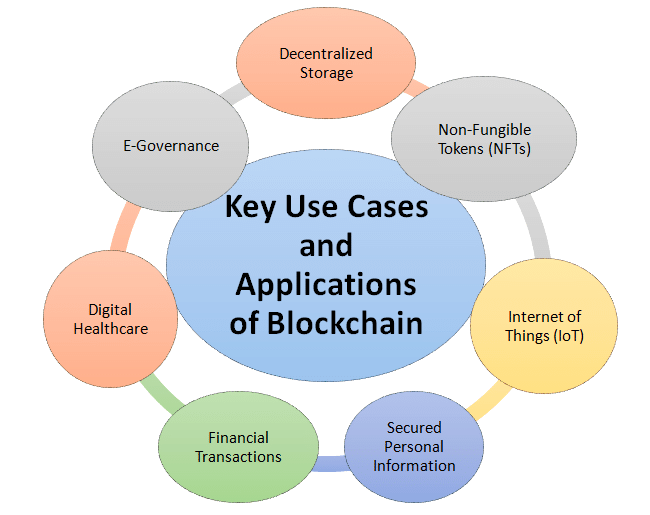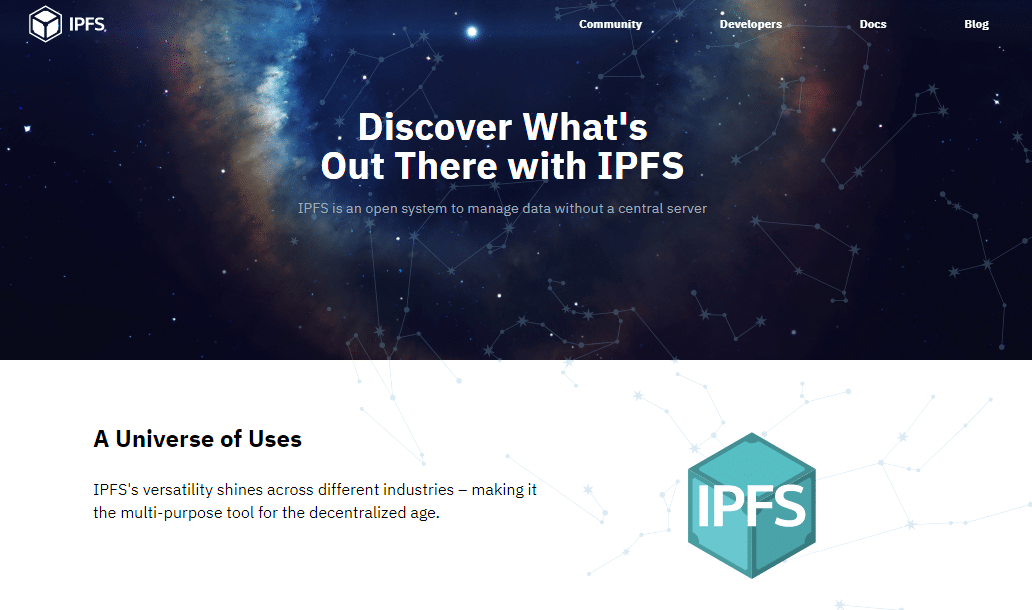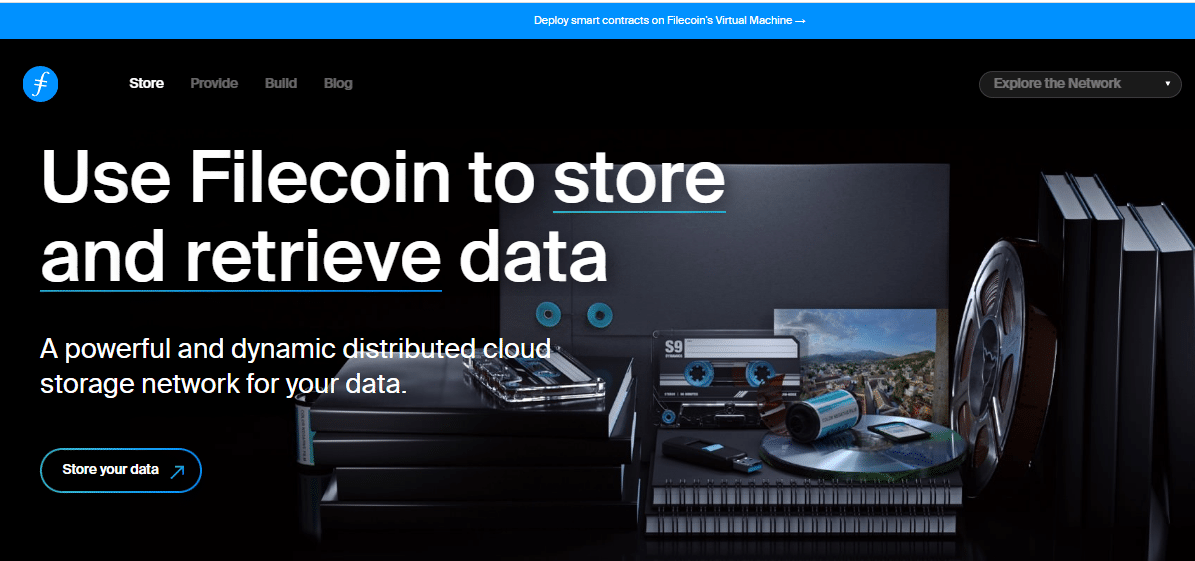Blockchain’s immutability and cryptographic signatures stand guard against hacking, system failures, and data breaches, fortifying data integrity. These features are invaluable when it comes to data storage. It’s no surprise, therefore, that blockchain-based storage platforms are gaining in popularity.
Data is a crucial asset today, and ensuring its security and accessibility is of paramount importance. Traditional centralised storage solutions have long been the norm, but they come with vulnerabilities such as data breaches, single points of failure, and susceptibility to hacking.
The classical centralised storage systems, often governed by a single authority or entity, hold massive repositories of data within specific servers or data centres. Despite their efficiency and ease of management, these systems present a significant risk – a single point of failure. If breached, manipulated, or disrupted, the entire system could crumble, leading to catastrophic data loss or unauthorised access. This has brought about a quest for alternative solutions that can address these vulnerabilities effectively.
Blockchain technology was initially popularised as the technological backbone of cryptocurrencies like Bitcoin. Its inherent characteristics – decentralisation, immutability, and cryptographic security – make it a promising candidate for revolutionising data storage and backup practices.
The decentralised nature of blockchain means that data isn’t stored in a single location or controlled by a sole authority. Instead, it is distributed across a vast network of nodes, creating a decentralised system that eliminates the risk associated with a central point of failure. Each piece of data is cryptographically secure, time-stamped, and linked together, forming an immutable chain of blocks. This ensures that the stored information remains tamper-proof and highly resistant to unauthorised changes or breaches.

The integration of blockchain technology into decentralised storage solutions offers a promising alternative to centralised repositories, promising enhanced security, resilience, and accessibility. It signifies a paradigmatic change in how data can be secured and managed. By spreading data across a network of nodes, utilising advanced encryption methods, and employing consensus protocols, blockchain offers a compelling solution to the inherent vulnerabilities of traditional centralised storage.
Blockchain technology and use cases
The hallmark of blockchain lies in its ability to record and store data in a secure and immutable manner. This is achieved through the chaining of individual blocks of data in a chronological sequence, where each block contains a cryptographic hash of the previous one. This linking structure ensures that any attempt to alter past data would necessitate changing the entire subsequent chain, making it practically impossible to tamper with the information without consensus across the network.
The feature that distinguishes blockchain from traditional databases is its tamper-proof nature. The distributed nature of the ledger ensures that no single entity can unilaterally manipulate the information stored within it. Consensus mechanisms, such as proof of work (PoW) or proof of stake (PoS), validate and agree upon the accuracy of transactions and data, further enhancing the system’s security and reliability.
The application of blockchain extends well beyond its initial use in the realm of financial transactions. Various industries are actively exploring and implementing its potential in different sectors. In supply chain management, for instance, blockchain’s transparency and immutability have been harnessed to track and verify the origins and movements of products, thereby enhancing trust and authenticity within supply chains.
Similarly, in healthcare, blockchain technology has been considered for securely managing patient data, ensuring privacy and integrity while enabling authorised access by healthcare providers. In the real estate sector, blockchain’s ability to provide transparent and immutable records of property ownership and transactions could revolutionise the industry, reducing fraud and streamlining the cumbersome processes involved in property transactions.
Crucially, the sphere where blockchain showcases immense promise is in data storage and backup. As industries increasingly grapple with the vulnerabilities of centralised data storage, blockchain’s decentralised nature and robust security features offer a compelling solution. The distributed and immutable storage model of blockchain reduces the risk of data breaches, offers enhanced resilience against cyber threats, and provides a more secure and reliable framework for data backup.

Blockchain for decentralised storage
Decentralised storage, powered by blockchain technology, introduces a transformative approach to handling data. This involves breaking down data into smaller, encrypted segments, a process known as sharding. These encrypted fragments are then distributed across a network of nodes in a decentralised manner. This fragmentation and distribution not only fortify the security of the stored data but also augment its accessibility and reliability.
Also, the redundancy created by distributing data across multiple nodes in a decentralised blockchain network ensures that even if one or several nodes fail or are compromised, the data remains accessible and intact due to its availability across other nodes.
One of the core pillars of blockchain technology is its immutability – the quality of being unchanging over time. Blockchain maintains the integrity and security of stored data through its immutable nature. Each block within the chain contains a cryptographic hash, a unique digital signature derived from the data in the block, including a reference to the previous block’s hash. This chaining mechanism creates a chronological sequence, ensuring that any attempt to alter or tamper with data within a block would necessitate altering subsequent blocks in the chain, thereby alerting the entire network to the unauthorised change. This feature makes the blockchain extremely resilient to unauthorised modifications, making data tampering exceedingly difficult.
The immutability of the blockchain ensures that once data is stored and confirmed within the chain, it remains secure and unaltered. Any modifications or tampering attempts become instantly visible across the network, making the system robust against fraudulent or unauthorised activities.

Working with blockchain-based storage platforms
Several blockchain-based storage platforms now provide innovative, decentralised and secured backup solutions. For instance, Filecoin allows users to rent out spare storage space in exchange for Filecoin tokens. This incentivises individuals and organisations to contribute their unused storage and create a decentralised storage network. Another example is Storj, which operates by breaking down files into smaller encrypted pieces and distributing them across its network of nodes. Users can rent out their unused storage space and earn cryptocurrency in return, creating a decentralised and efficient storage system.
These platforms utilise blockchain technology to create a trustless and secure environment for data storage, ensuring privacy, integrity, and accessibility.
IPFS (InterPlanetary File System) (https://ipfs.io/): IPFS is a peer-to-peer hypermedia protocol designed to create a distributed and decentralised method for storing and accessing files. It’s not exactly a blockchain but is often used in conjunction with blockchain technology. IPFS is engineered to establish a distributed and decentralised system for file storage and retrieval.
IPFS’s core concept is content-addressing, which means files are identified and retrieved based on their unique content, rather than using location-based URLs. At its core, IPFS functions by breaking down files into smaller chunks, and each chunk is assigned a distinct cryptographic hash. This hash acts as a unique identifier for that particular piece of data. Rather than traditional hierarchical file systems, IPFS utilises a Merkle DAG (directed acyclic graph) data structure to link these chunks together, allowing for efficient tracking and retrieval of content.
A key advantage of IPFS lies in its decentralised nature. Instead of relying on a central server, files on IPFS are stored across a network of nodes. These nodes collaborate to store and distribute the chunks of files. When a user requests a specific file, IPFS searches the network for the nodes storing the relevant chunks and retrieves the data, reassembling it on the user’s end. One of the critical advantages of IPFS is its resilience against data loss and censorship. Due to the distributed nature of the system, files are replicated across multiple nodes, reducing the risk of losing data if a single node fails. Furthermore, IPFS fosters an environment where information remains available even if certain parts of the network go offline or if there are disruptions.
IPFS can be used for a wide array of applications, including website hosting, distributing software updates, sharing large data sets, and more. It offers a more efficient and potentially faster method of content delivery by utilising a peer-to-peer network, enabling users to access and share information in a decentralised, secure, and reliable manner.
Although not a blockchain itself, IPFS often synergises with blockchain technology to complement and enhance decentralised applications, including data storage, authentication, and decentralised web services. It represents a significant step forward in reshaping how data is stored, accessed, and shared on the internet, offering a decentralised and secure alternative to traditional web protocols.
Filecoin (https://filecoin.io/): Filecoin operates on the principles of blockchain and incentivises users to contribute their excess storage space to create a large-scale, distributed storage system. Users can earn Filecoin tokens by contributing storage space, creating a decentralised and efficient storage network. It was developed to address the growing need for secure, decentralised, and efficient storage solutions.
The network enables users to both store and retrieve data in a decentralised manner through a marketplace where unused storage space can be rented out in exchange for Filecoin tokens. These tokens serve as a form of payment within the ecosystem and can also be traded on various cryptocurrency exchanges. This creates a peer-to-peer economy where individuals or organisations with spare storage capacity can offer it to those in need of storing their data.
The storage system divides files into smaller pieces, which are encrypted, duplicated, and distributed across a network of storage providers. This process enhances data security and resilience, ensuring that the information remains available and intact even if some nodes in the network fail or go offline.
Filecoin implements a proof system called ‘Proof of Replication’ to ensure that the storage providers are storing the data as promised. This means that storage providers must prove that they are storing the exact copy of the data they were hired to store. This mechanism helps to maintain data integrity and trust within the network. Moreover, the Filecoin network is designed to be self-sustaining and decentralised. As more users contribute storage space, the network’s capacity and resilience increase, making it more attractive for those seeking reliable and distributed storage solutions.
Storj (https://storj.io/): Storj is a decentralised cloud storage platform that employs blockchain to secure and distribute files across a network. Users can rent out their unused storage space and earn cryptocurrency in return.
Sia (https://sia.tech/): Sia is a decentralised cloud storage platform that utilises blockchain to secure data through a peer-to-peer network. It aims to provide secure and private storage at a lower cost.
Arweave (https://www.arweave.org/): Arweave is a permanent and low-cost data storage solution using a blockchain-like structure called the ‘blockweave’. It aims to store data indefinitely, ensuring it remains accessible over time.
Bluzelle (https://bluzelle.com/): Bluzelle is a decentralised database service that uses blockchain to provide scalable and reliable data storage. It offers secure and cost-effective data management.
Swarm (https://ethersphere.github.io/swarm-home/): Swarm is a decentralised storage and communication system that operates as a base layer for Ethereum’s web3 stack. It provides decentralised and redundant storage for various dApps.
NKN (New Kind of Network) (https://www.nkn.org/): NKN is a blockchain-powered decentralised data transmission network. It incentivises users to share network connections and spare bandwidth to create a more extensive and secure network.
SpaceChain (https://spacechain.com/): SpaceChain aims to combine blockchain technology with satellite infrastructure to create a decentralised and secure data storage network accessible from anywhere in the world.
The potential for blockchain-based tools in decentralised and secured backup is immense, with ample room for further research and development. Advancements in this field could focus on enhancing scalability, improving user experience, and increasing interoperability between different blockchain networks. Additionally, the integration of smart contracts into decentralised storage systems could automate and ensure secure backup processes. Innovations in encryption methods and data retrieval techniques are also areas that researchers are actively exploring to bolster the security and efficiency of blockchain-based storage.
Blockchain technology holds promise for secure, decentralised data backup. As research and development in this field continue to evolve, the potential for safer, more accessible, and efficient storage solutions remains high. With a focus on innovation and overcoming existing challenges, blockchain-based tools for data backup are poised to revolutionise the way we secure and store our valuable information.













































































